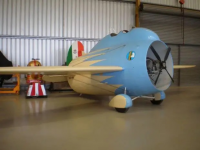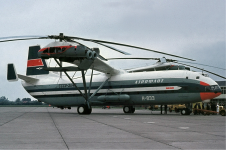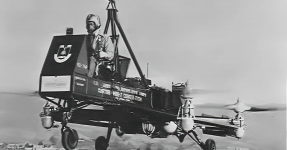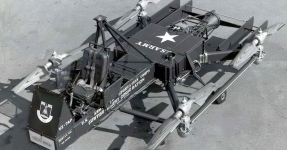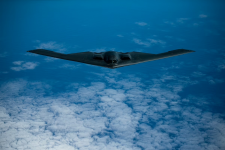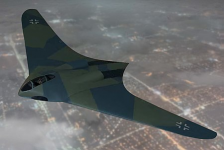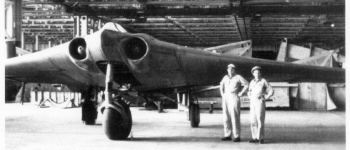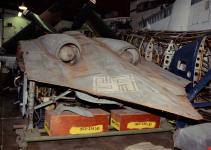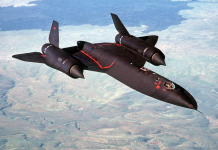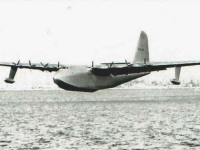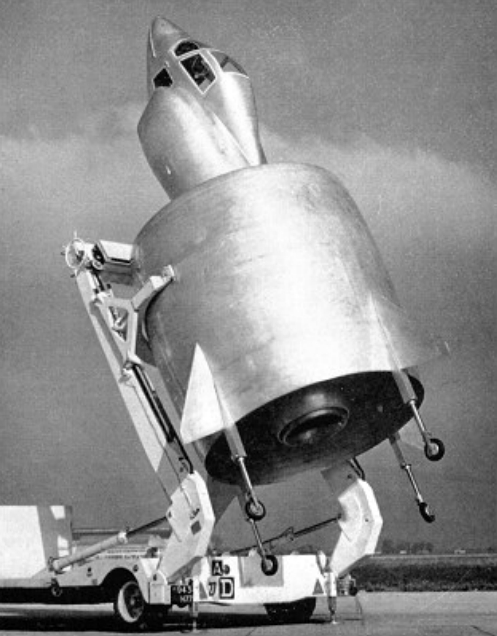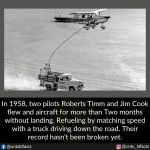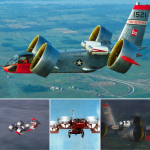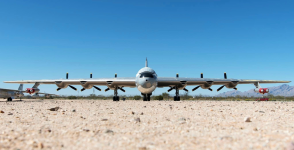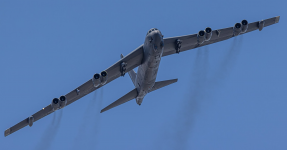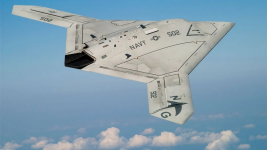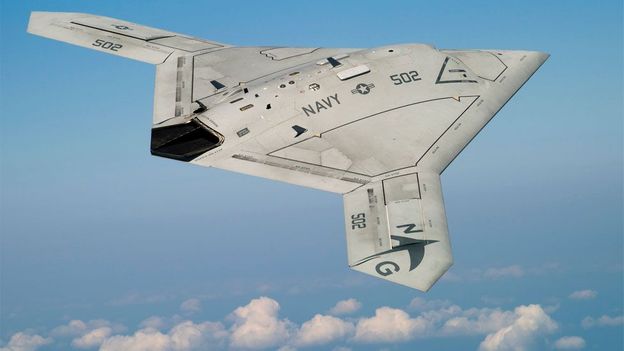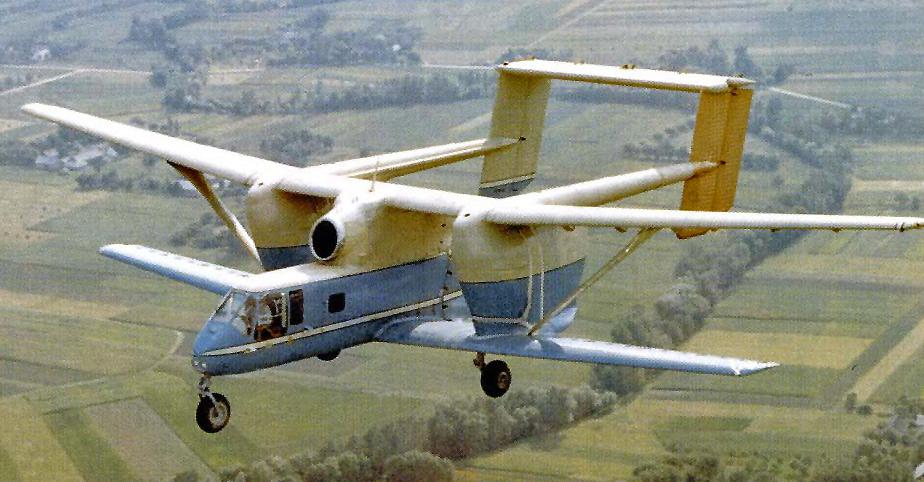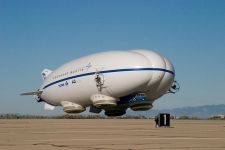
The P-791 is a 120 foot (36.6 meter) long, tri-lobe, semi-buoyant hybrid airship that serves as a sub-scale technology demonstrator for future Lockheed Martin hybrid airships.
The P-791 is heavier-than-air and flies under the combined influence of the buoyant lift from helium (about 80% of total lift), vectored thrust from propellers, and aerodynamic lift from the hull and fins when in forward flight. The flexible composite fabric hull (the gas envelope) is slightly pressurised (pressure stabilised) to maintain its aerodynamic shape. The P-791 is not designed for vertical takeoff and landing (VTOL) or hover, since flight depends on about 20% of total lift being generated by aerodynamic lift from the hull and/or vectored thrust from the propulsion system.
The P-791 is designed for short takeoff and landing (STOL) and ground operations at unimproved sites using its air cushion landing system (ACLS). During takeoff and landing and when the P-791 is moving on the ground, the ACLS operates in “lift” mode. The four air cushion pads on the bottom of the airship allow it to float on cushions of air while using the vectored thrust propulsion system to move the airship over almost any type of surface (pavement, unimproved natural surface like dirt, sand, snow or ice or water).
The first flight of the P-791 took place on 31 January 2006 at Lockheed Martin’s facility in Palmdale, CA.
Airship magazine reported that the P-791 flew six times. Lockheed Martin claimed that all flight test objectives were successfully met.

